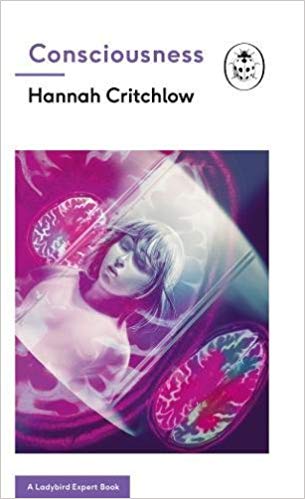Consciousness
Published in Social Sciences

Consciousness is renowned as one of the great remaining mysteries of science and philosophy. The existence of our conscious minds presents a puzzle so seemingly impenetrable that the question of how subjective awareness could arise from a material object such as the brain is known simply as the hard problem.
Given the difficulty of the subject matter, then, one might be forgiven for being skeptical that it could be covered in a book of 50 pages – especially when half of those pages are covered by illustrations. It is certainly true that Consciousness: A Ladybird Expert Book raises more questions about consciousness than it answers. But that, I think, is just as it should be. This is a topic on which there are more questions than answers.
Author Hannah Critchlow covers a wide range of topics related to consciousness, from dreaming and drugs to free will and philosophical zombies. My personal favorite was the phenomenon of ‘blindsight’ in which some patients with damage to the brain’s visual cortex are able to navigate around objects without consciously seeing them –raising the possibility that our consciousness might not so important as we think it is.
Each of the one-page chapters is an accessible and accurate introduction to its topic. Indeed, reading this book is rather a stream-of-consciousness experience, with its leaps between related topics and the lovely, if slightly surrealist, illustrations (by Stephen Player.)
The consciousness of animals is a recurring theme in the book, as Critchlow considers whether dogs, bats, birds or perhaps even insects could be sentient. I must admit that I did balk slightly at the possibility that plants might be aware of their surroundings and that they display ‘cognitive skills’, but perhaps this merely reflects the narrowness of my own consciousness.
Please sign in or register for FREE
If you are a registered user on Research Communities by Springer Nature, please sign in
http://communities.springernature.com/posts/a-quantized-musical-scale-explains-memory-selfconsciousness-and-duality-binary-phi
I am pleased to share my paper:
“A Quantized Musical Scale Explains Memory, Self-Consciousness and Duality Binary/Φ.”
In this work, I present a mathematical and harmonic framework showing how the golden ratio (φ), binary structures, and angular geometry give rise to a quantized musical scale. This scale not only explains fundamental musical intervals, but also provides insights into memory, perception, and the possible harmonic basis of consciousness.
The paper proposes that entropy and resonance are not random, but deeply coherent—rooted in the same symmetries that organize both music and biology.